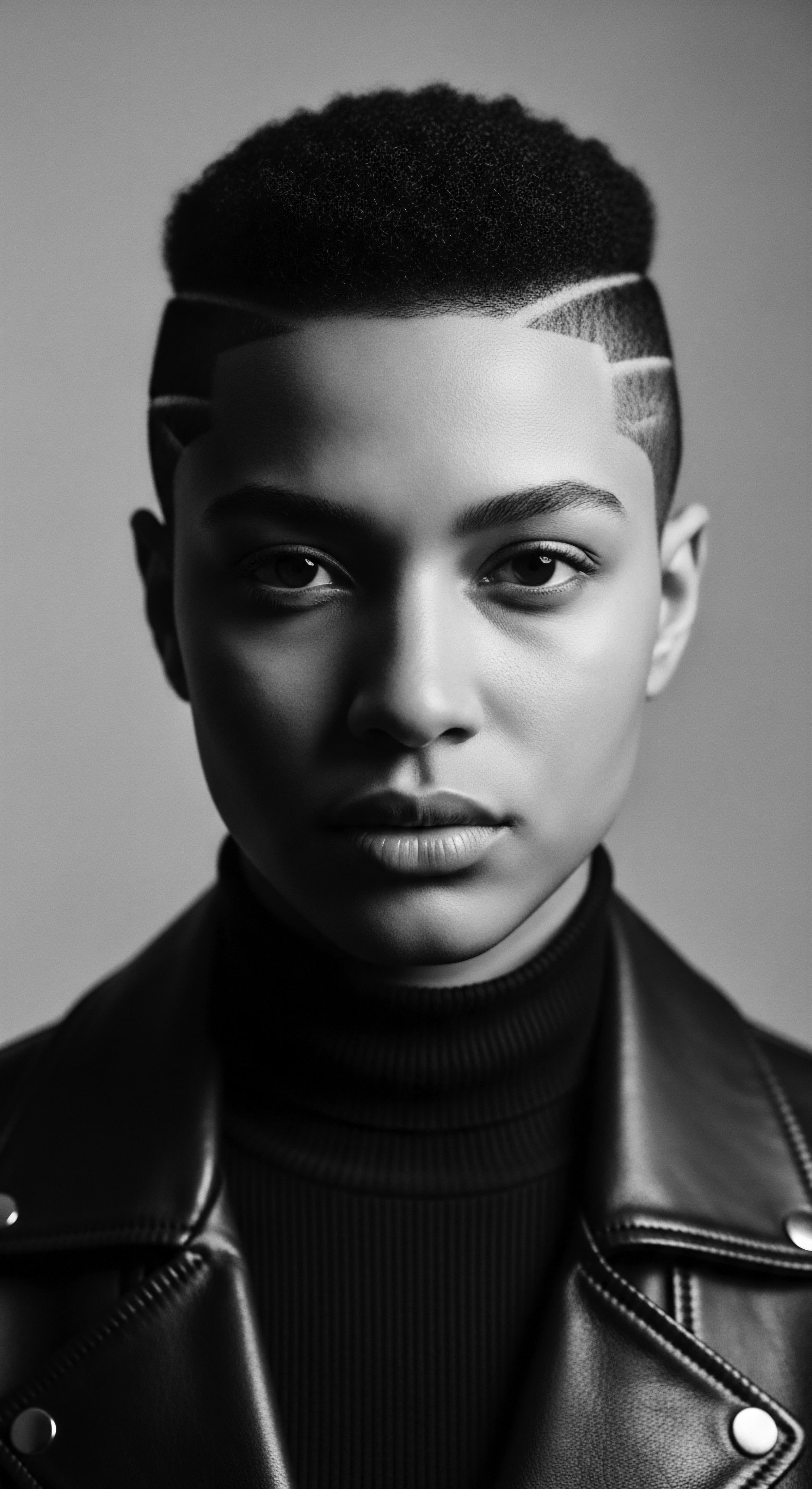
Roots
The coil, the kink, the curl – a language spoken through strands, each twist a whisper of generations past. For those whose ancestry traces through the continents of Africa and beyond, textured hair is far more than a simple biological feature. It stands as a living archive, a scroll upon which stories of resilience, identity, and profound ingenuity are written.
Within this legacy lies a fundamental question ❉ what makes textured hair respond uniquely to the ancient wisdom of botanical pigments? To seek an answer, one must journey backward through time, to the very source of these strands, understanding their elemental biology through a lens honed by the reverence of our forebears.
Our exploration begins with the foundational understanding of textured hair, not as a deviation, but as a diverse spectrum of natural expressions. Every hair strand, regardless of its curl pattern, possesses three primary layers ❉ the outermost Cuticle, a protective sheath of overlapping scales; the central Cortex, which gives hair its strength, elasticity, and houses its natural pigment; and the innermost Medulla, a core that might be absent in finer hair types. (Wella, n.d.) The unique architecture of textured hair lies in the shape of its follicle and the resulting elliptical or flattened cross-section of the hair shaft. This shape leads to more bends and twists, creating an often lifted or less tightly sealed cuticle layer compared to straight hair.
Such a structure directly affects the hair’s Porosity, or its ability to absorb and retain moisture and external substances. (Latimer, 2020) This inherent characteristic, a consequence of its very being, plays a central role in how botanical pigments interact with textured hair.
Textured hair, a living heritage, possesses a unique cuticle structure and melanin composition, influencing its distinct interaction with natural botanical pigments.

Hair Anatomy and Its Ancestral Wisdom
The inner world of the hair, the cortex, holds the secret to its color ❉ Melanin. Two primary types of melanin determine the vast spectrum of human hair shades. Eumelanin imparts black and brown tones, while Pheomelanin is responsible for red and yellow hues. (Goldwell, n.d.) Textured hair, particularly that of African and mixed-race descent, tends to have a higher concentration of eumelanin, often in larger, more densely packed granules.
(Goldwell, n.d.) This intrinsic pigment makeup means that when botanical dyes are introduced, they are not simply depositing color onto a blank canvas. They are engaging in a dialogue with the hair’s existing chromatic story.
Consider the practices of ancient civilizations. Across Africa, the use of indigenous plants for body adornment, including hair, was commonplace, serving not only aesthetic purposes but also ceremonial, social, and medicinal roles. (Adejumo & Ajani, 2024) While the concept of “dyeing” in the modern sense might differ, the application of plant-based materials for altering or enhancing hair’s appearance has roots stretching back millennia.
The practice was not about erasing existing color but about augmenting it, deepening it, or introducing new, subtle dimensions. This deep understanding of natural elements, passed through oral traditions, laid a framework for how specific plants would come to be understood in relation to diverse hair types.
| Hair Component Cuticle Layer |
| Influence on Botanical Pigment Response The natural lift or irregularity in textured hair's cuticle can mean greater initial absorption of botanical compounds, yet also potential for faster color release if not sealed properly. Traditional methods often involved conditioning agents to help mitigate this. |
| Hair Component Cortex & Melanin |
| Influence on Botanical Pigment Response The concentration and type of melanin (often higher eumelanin) within textured hair means botanical pigments layer over, rather than replace, existing color, yielding rich, unique shades that honor the hair's natural base. |
| Hair Component The intrinsic characteristics of textured hair guide its unique interaction with natural botanical pigments, a dialogue observed and understood through generations. |
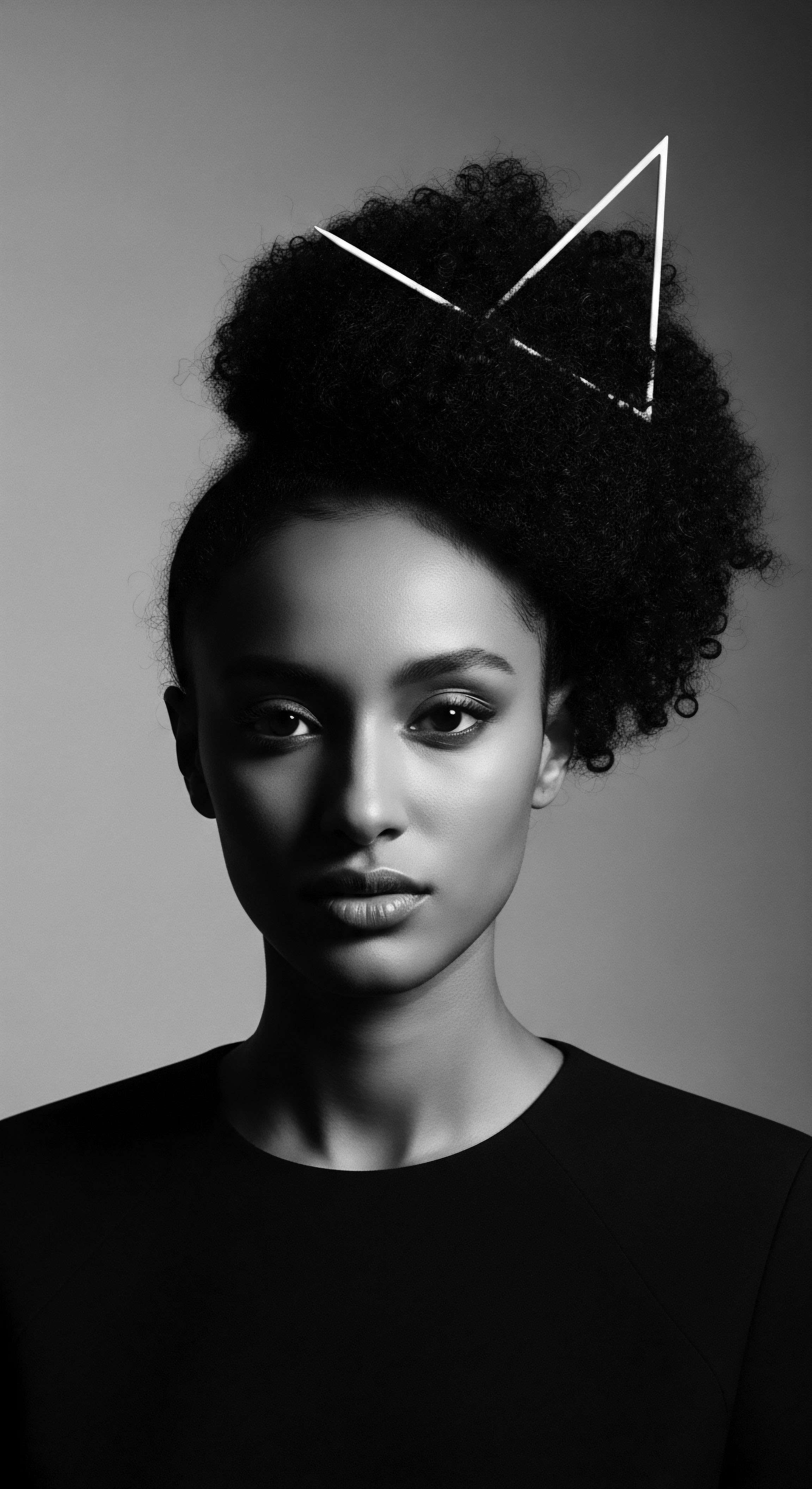
Classification Systems and Cultural Wisdom
The very language used to classify textured hair has often been shaped by external gazes, yet within communities of African descent, the understanding of hair types has always been intimately practical, guiding care and styling. Modern systems attempt to categorize curl patterns, yet these are often simplified. A more authentic classification arises from centuries of hands-on engagement ❉ the hair’s density, its hydration needs, its ability to hold a particular style, and its response to various plant applications. These are the true markers, historically observed.
The traditional lexicon of textured hair care, passed down through families and communities, speaks volumes about ancestral knowledge. Terms for hair type might describe its softness or coarseness, its tendency to knot, or its luster. Equally important were the names for the plants themselves, often tied to their observed effects on hair or their spiritual significance. This indigenous classification, deeply practical, offers a nuanced guide to how different botanicals would behave with varied hair textures.

Hair Growth Cycles and Ancestral Factors
Hair grows in cycles ❉ an active growth phase, a transitional phase, and a resting phase. (MDPI, n.d.) While this biological reality holds true for all hair, historical environmental factors and nutritional practices within Black and mixed-race communities subtly shaped the hair’s health and vitality, influencing its receptiveness to botanical care. Diets rich in nutrient-dense plant foods, along with topical applications of natural oils and herbs, supported healthy growth.
(Aglaophyton, 2025) Such consistent, holistic care, interwoven with daily life, contributed to hair that, while genetically predisposed to its unique texture, was also optimized for wellness. This wellness, passed through generations, informed the ancestral practices of using plant-based treatments.
The resilience of textured hair, its capacity for growth and self-renewal, was not merely a biological fact; it was a testament to the symbiotic relationship between human and nature, carefully observed and sustained through time. The efficacy of botanical pigments, then, was not isolated but part of a larger, inherited system of care.

Ritual
The act of tending to textured hair transcends mere grooming; it is a ritual, a tender thread connecting present hands to ancestral wisdom. For generations, these rituals have been passed down, adapting and evolving, yet always centered on the hair’s unique needs. Botanical pigments, in their application, became central to these traditions, shaping techniques, tools, and the very transformations hair could undergo. The inherent qualities of textured hair, its curl pattern, its porosity, and its robust melanin content, provided the canvas for these natural dyes.
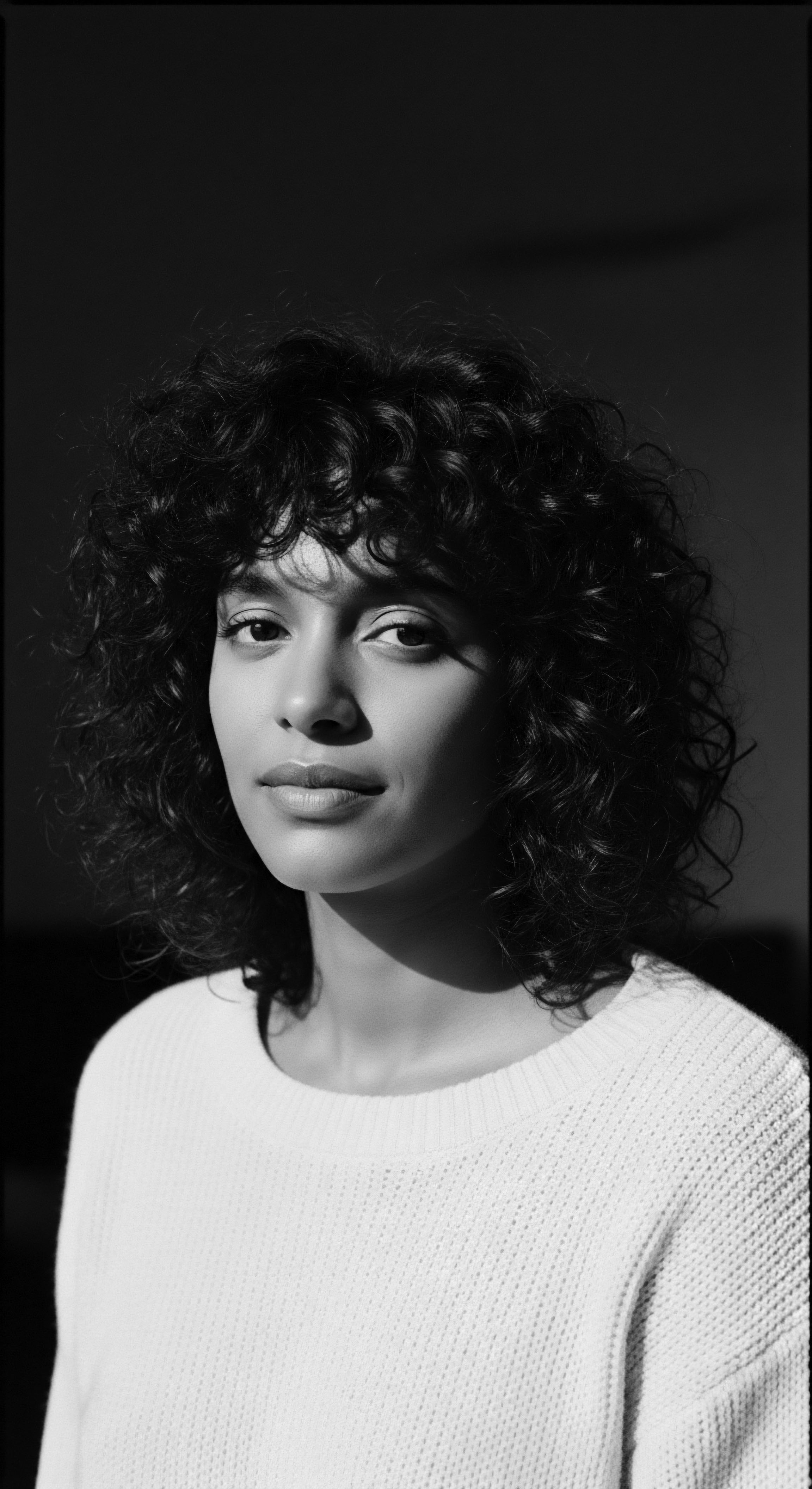
Protective Styling Ancestry
Protective styles, from elaborate cornrows to intricate twists and coiled Bantu knots, served historical purposes far beyond aesthetics. They safeguarded delicate strands, minimized manipulation, and expressed social status, tribal affiliation, and spiritual beliefs. (Da Costa, n.d.; Kilburn & Strode, 2021) Within these practices, botanical infusions and colorants played a supporting role, often as tonics, conditioning agents, or subtle enhancers. Henna, for instance, has a history stretching back over 5,000 years, used across North Africa and the Near East for its coloring and fortifying properties.
(Biocoiff, 2025) While henna’s primary lawsone molecule adheres to the keratin on the hair’s surface, its interaction with the raised cuticle scales of textured hair can lead to a deeper, more even coating, lending a rich, sometimes auburn, warmth to already dark strands. (Wella, n.d.) This surface deposition, unlike chemical dyes that penetrate and alter the hair’s internal structure, allows the hair’s intrinsic character to shine through, a deeply respected aspect in many ancestral beauty practices.
Traditional styling, rooted in ancestral knowledge, often enhanced hair’s natural qualities, with botanical pigments offering subtle, supportive color and conditioning without harsh chemical alteration.
The way indigo, another cherished botanical, interacts with textured hair showcases this subtlety. Often used in tandem with henna, indigo provides a cool, deep blue pigment that, when layered over henna’s red, can yield shades from warm brown to glossy black. (Shahin, n.d.) The porous nature of textured hair can sometimes mean that pigments settle more readily, allowing for nuanced depth of color, particularly when applied as a paste. This layering method respects the hair’s natural state, creating shades that appear truly organic, as if born from the strands themselves.
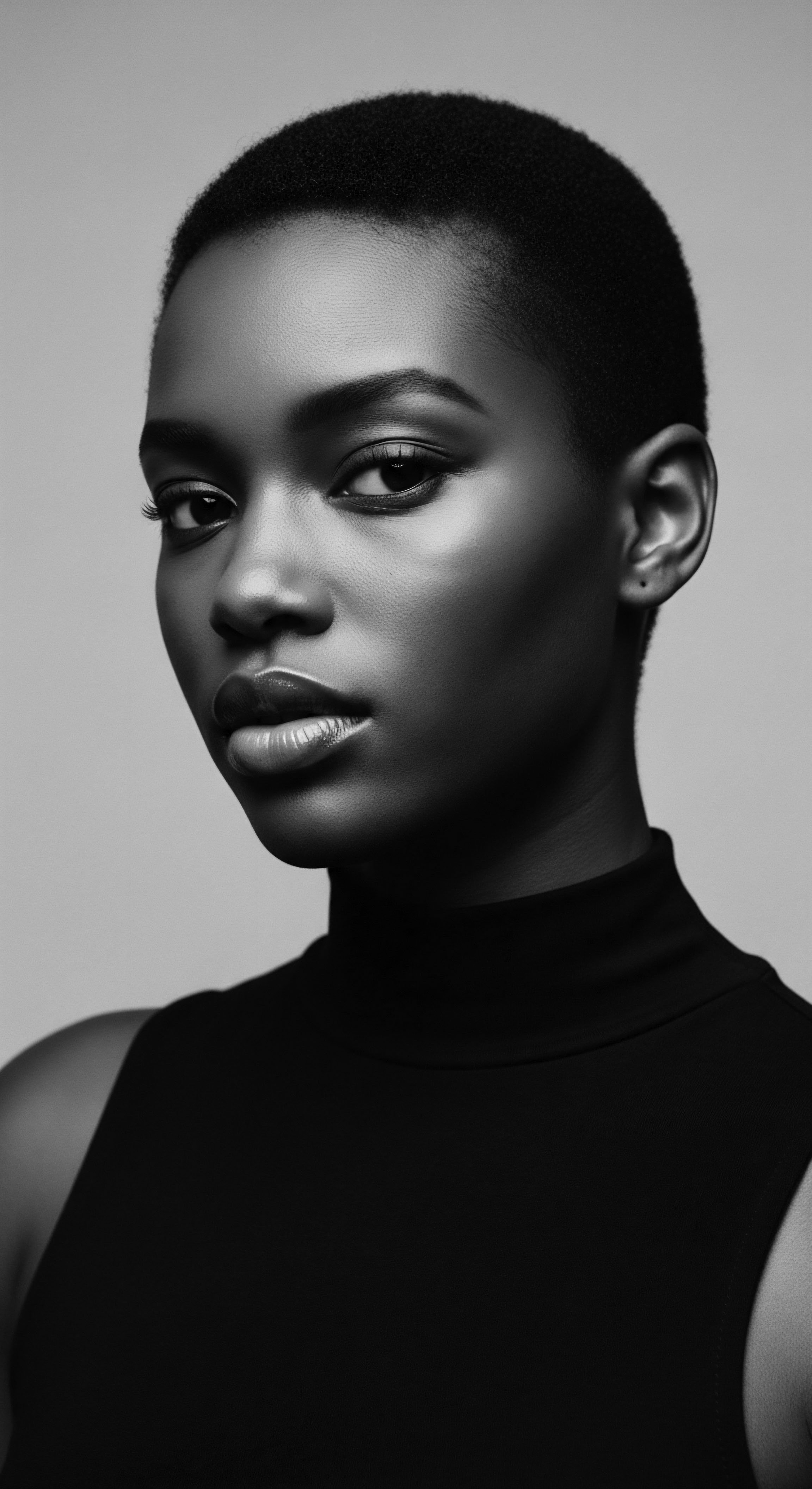
Natural Styling Methods and Traditional Uses
The very act of defining textured hair through natural styling—wash-and-gos, twists, braids left to unravel into waves—often involved botanical preparations. These preparations, often infusions or pastes, were not simply about holding a style. They provided conditioning, supported scalp health, and, in some cases, lent a gentle, temporary color.
The Epe communities of Lagos State, Nigeria, offer a compelling example, where tribal women have long been custodians of deep ethnobotanical knowledge, utilizing local flora for hair and skin care as an integral part of their cultural heritage. (Olarewaju & Lawal, 2024) This involves using plants for their functional properties, including their capacity to impart color or enhance the hair’s natural sheen, ensuring beauty practices were aligned with wellness.
Consider the use of ingredients like amla (Indian gooseberry) or bhringraj in Ayurvedic traditions, which have been incorporated into various hair preparations for their purported benefits, including promoting hair growth and restoring natural color to gray strands. (Kaur, et al. 2024) While the direct coloring power of these might be subtle on highly pigmented textured hair, their historical application often involved creating an optimal canvas, allowing other pigments like henna or indigo to adhere more effectively. The methods involved, such as long application times or repeated treatments, were not seen as burdensome but as deeply personal and communal ceremonies, a testament to the reverence held for hair.

The Complete Textured Hair Toolkit
The tools of textured hair care, passed through generations, complement the use of botanical pigments. Wide-toothed combs crafted from natural materials, wooden styling pins, and fabric wraps were all designed to navigate the unique characteristics of coily and kinky strands with care. When botanical pigments entered the picture, they were often prepared with simple, accessible tools ❉ mortars and pestles for grinding dried leaves, clay bowls for mixing pastes, and hands—always hands—for the application. The tactile nature of these tools, their connection to the earth, further deepened the ritual.
- Henna (Lawsonia Inermis) ❉ A cornerstone of ancestral hair care across North Africa and parts of Asia, yielding red to auburn tones. It adheres to hair keratin, adding a protective layer. (Patel, et al. 2022)
- Indigo (Indigofera Tinctoria) ❉ From a plant known for its blue dye, often combined with henna to achieve deeper browns and blacks, historically used to complement existing dark hair. (Shahin, n.d.)
- Walnut (Juglans Regia) ❉ Extracts from walnut husks and leaves historically provided black and dark brown shades, a practice seen in various ancient cultures. (Kaur, et al. 2024)
- Amla (Phyllanthus Emblica) ❉ Though not a direct colorant, this fruit, particularly in Ayurvedic practices, helps hair absorb dark botanical colors more effectively and provides conditioning benefits. (Biocoiff, 2025)
- Chamomile (Matricaria Chamomilla) ❉ Historically used to impart subtle yellow or golden hues to lighter hair, demonstrating the breadth of plant-based color exploration. (Bishnoi, et al. 2020)
The preparation of these botanical pigments, often involving simple grinding and mixing with water, highlights a fundamental difference from modern chemical dyes. There was no need for harsh developers or synthetic compounds. The plants themselves held the color, and the ritual of preparation was as important as the application, a tangible link to the wisdom of the earth.

Relay
The story of textured hair, its history, and its unique chemistry with botanical pigments is not a static one. It is a living relay, passed from elder to youth, from tradition to scientific inquiry, constantly evolving while retaining its core ancestral truths. Understanding why textured hair responds as it does to the gifts of the earth requires a deep consideration of its intrinsic properties, viewed through the cumulative wisdom of generations and the clarifying lens of contemporary science. This intersection illuminates the holistic care regimens that have always honored the integrity of textured hair.

Building Personalized Regimens From Ancestral Wisdom
The very structure of textured hair—its tightly coiled or wavy patterns—contributes to its natural propensity for dryness. The twists and turns of the hair shaft make it challenging for the scalp’s natural oils (sebum) to travel down the length of the strand. (Wella, n.d.) This reality, understood intuitively by ancestors, led to the development of regimens centered on moisture retention and scalp nourishment. Botanical pigments, when applied, were often part of a broader system of care that prioritized conditioning and protection.
The efficacy of natural colorants on textured hair, for example, is profoundly affected by its Porosity. Hair with higher porosity, characterized by a more lifted cuticle, absorbs substances more quickly. (The Shade, n.d.) Textured hair often exhibits varying degrees of porosity along the strand, with ends typically being more porous due to age and styling. This means botanical dyes can deposit color effectively, but retention requires careful management.
The Mundari people of South Sudan , for instance, use cow urine for hair bleaching, an example of how diverse cultures employed available natural substances to alter hair color or appearance. (garmonbozia, 2025) While distinct from botanical pigments for adding color, this practice highlights the resourcefulness and ingenuity in ancestral hair modification across different African communities. Their methods, deeply integrated into their cultural fabric, demonstrate a profound understanding of how substances interact with hair in ways specific to their environment and needs.
Contemporary science echoes this ancestral understanding. Studies confirm that plant-based dyes, such as henna, do not alter the hair’s internal protein structure in the way harsh chemical dyes do. Instead, they deposit their pigment on the hair’s surface, coating the strand. (Biocoiff, 2025) This surface adherence is particularly beneficial for textured hair, which is already prone to breakage from chemical processing.
The coating can even add a layer of protection, smoothing the cuticle and providing a moisture-rich appearance. (Patel, et al. 2022) This scientific validation of an ancient practice reaffirms the wisdom embedded in ancestral care.
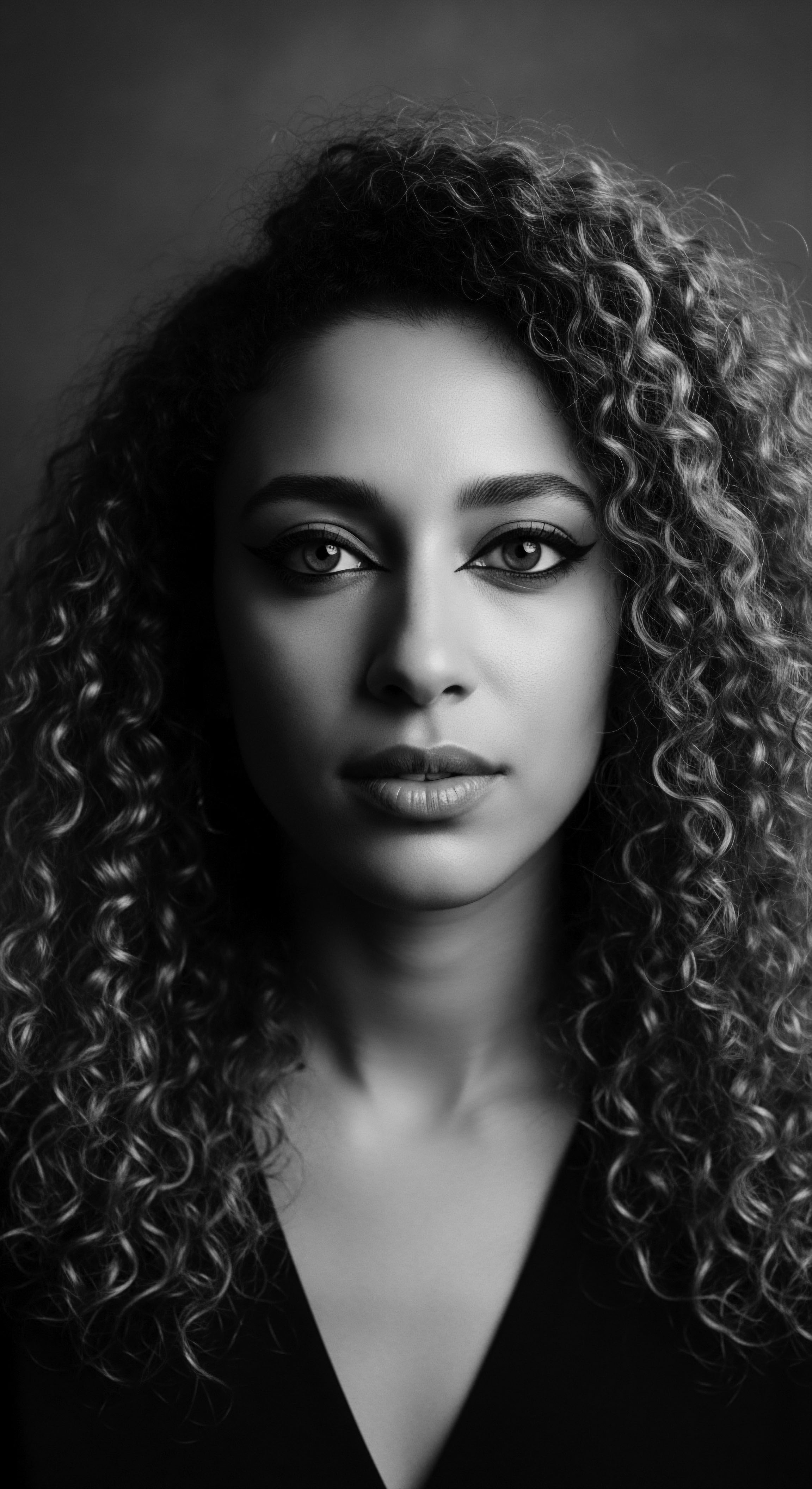
The Nighttime Sanctuary and Bonnet Wisdom
The practice of protecting hair at night, now often symbolized by the bonnet, carries a significant heritage. For textured hair, nighttime protection is not a modern innovation. It is an extension of ancestral practices aimed at preserving moisture, preventing tangles, and minimizing friction that can lead to breakage. Historically, protective wraps or sleeping on natural fibers were common.
When botanical pigments were applied, the care extended through the night, allowing the natural colorants to fully settle and bond with the hair, minimizing transfer, and protecting the integrity of the treatment. This consistent, gentle approach is what allows botanical pigments to deliver their lasting, conditioning benefits to textured hair.
| Botanical Pigment Lawsone (from Henna) |
| Characteristic and Interaction with Textured Hair Binds to keratin. The sometimes raised cuticle of textured hair allows for surface adherence, leading to warm, rich undertones, deepening existing dark hues without internal alteration. |
| Botanical Pigment Indigotin (from Indigo) |
| Characteristic and Interaction with Textured Hair Used in combination with henna, it deposits blue tones. Its layered application on textured hair provides a spectrum from deep browns to lustrous blacks, complementing higher eumelanin content. |
| Botanical Pigment Juglone (from Walnut) |
| Characteristic and Interaction with Textured Hair Offers brown to black color. Its interaction provides color by staining the outer layer of the hair, proving gentle for textured strands. |
| Botanical Pigment Botanical pigments, with their varied molecular structures, interact uniquely with textured hair, often enhancing existing tones through gentle surface deposition. |

Ingredient Deep Dives for Textured Hair Needs
The ancestral pharmacopoeia of hair care is vast, drawing from the earth’s bounty. The understanding that plants contain active phytochemicals, which modern science calls quinones, tannins, and flavonoids, was intuitive for those who lived in harmony with nature. (Patel, et al. 2022) These compounds are the very coloring agents in plants like henna, walnut, and logwood.
The deep, rich hues imparted by these botanicals on textured hair result from their direct binding to the keratin protein of the hair shaft. (Patel, et al. 2022) Unlike synthetic dyes, which require ammonia to open the cuticle forcibly and hydrogen peroxide to strip melanin, botanical dyes work with the hair’s natural structure. (Trademark Salon, 2025) This is profoundly significant for textured hair, which is inherently more susceptible to damage from harsh chemicals.
Botanical pigments also bring with them a host of other properties beyond mere color. Many traditional hair plants possess antioxidant, anti-inflammatory, and antimicrobial qualities, contributing to scalp health. (Patel, et al. 2022) This holistic benefit was always part of the ancestral application, not an afterthought.
For example, the same henna that colors hair also conditions it and can help soothe the scalp. (Biocoiff, 2025) The natural synergy between the coloring and conditioning aspects of these plants meant that ancestral coloring rituals simultaneously provided wellness.
- Porosity Awareness ❉ Textured hair often has varied porosity. Lower porosity hair may require longer application times or warmer conditions for pigments to adhere, a knowledge sometimes held ancestrally through specific preparation rituals. (Radico USA, 2025)
- Layering for Depth ❉ Achieving specific shades on textured hair with botanicals often involves layering, such as applying henna first for warmth, then indigo for depth, a technique refined over centuries.
- Moisture Seal ❉ Following botanical applications, ancestral practices emphasize sealing in moisture with oils or butters, crucial for retaining pigment and maintaining the health of porous strands.
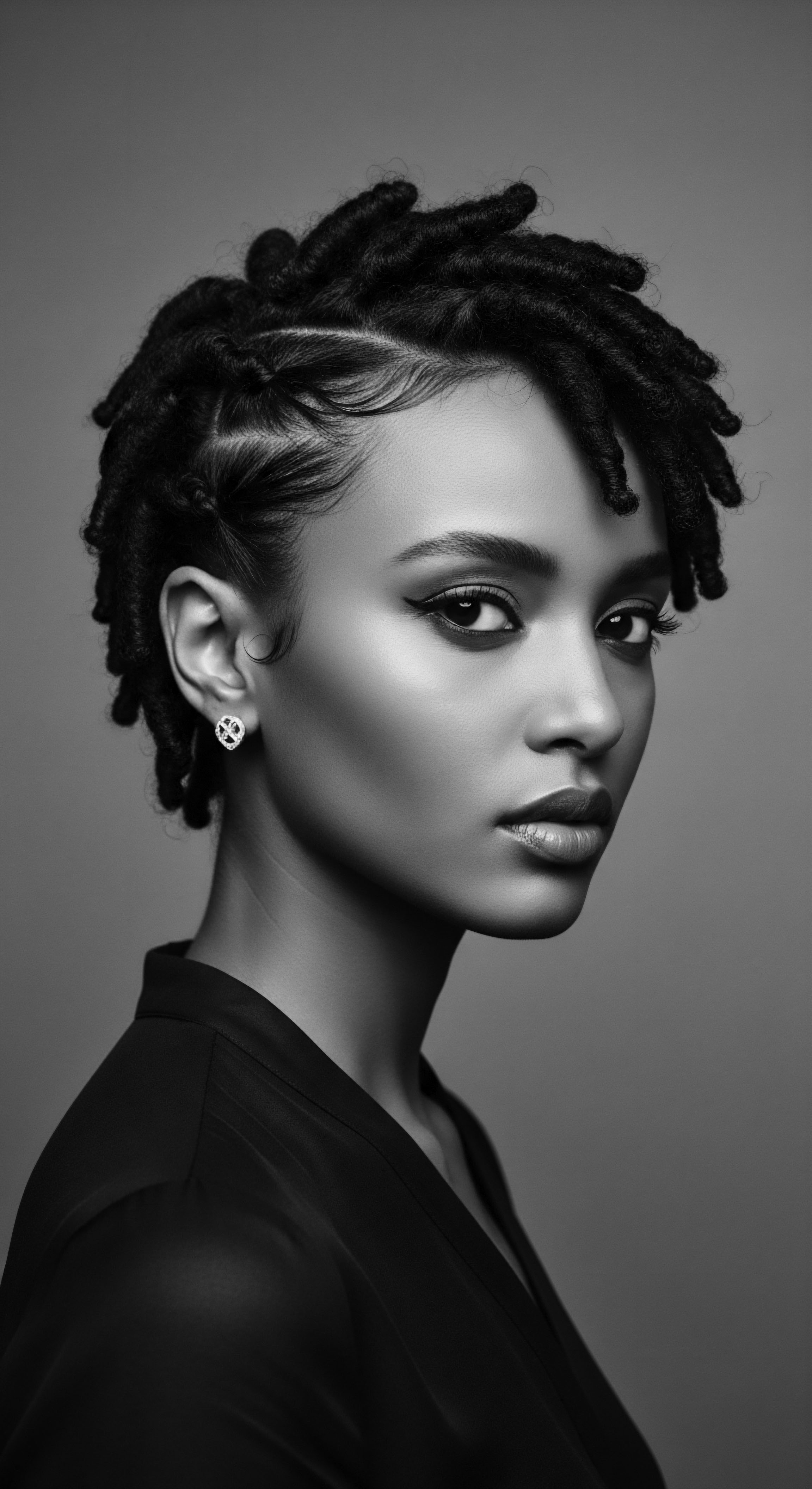
Holistic Influences on Hair Health
The connection between overall well-being and hair health was not lost on our ancestors. Hair was, and remains, a visible indicator of internal balance. Traditional wellness philosophies recognize that factors beyond topical application—diet, stress, environment—play a role. When considering botanical pigments, their efficacy on textured hair is tied to this broader context.
A healthy scalp and robust hair strand, supported by a nourishing internal environment, will more readily receive and hold natural colorants. This interconnectedness is a foundational principle of ancestral care, where the beauty of hair is inseparable from the health of the individual and their connection to their surroundings. The relay of this wisdom, from ancient times to the present, teaches us that the unique response of textured hair to botanical pigments is a testament to an enduring conversation between nature’s gifts and the profound heritage of those who learned to tend them.
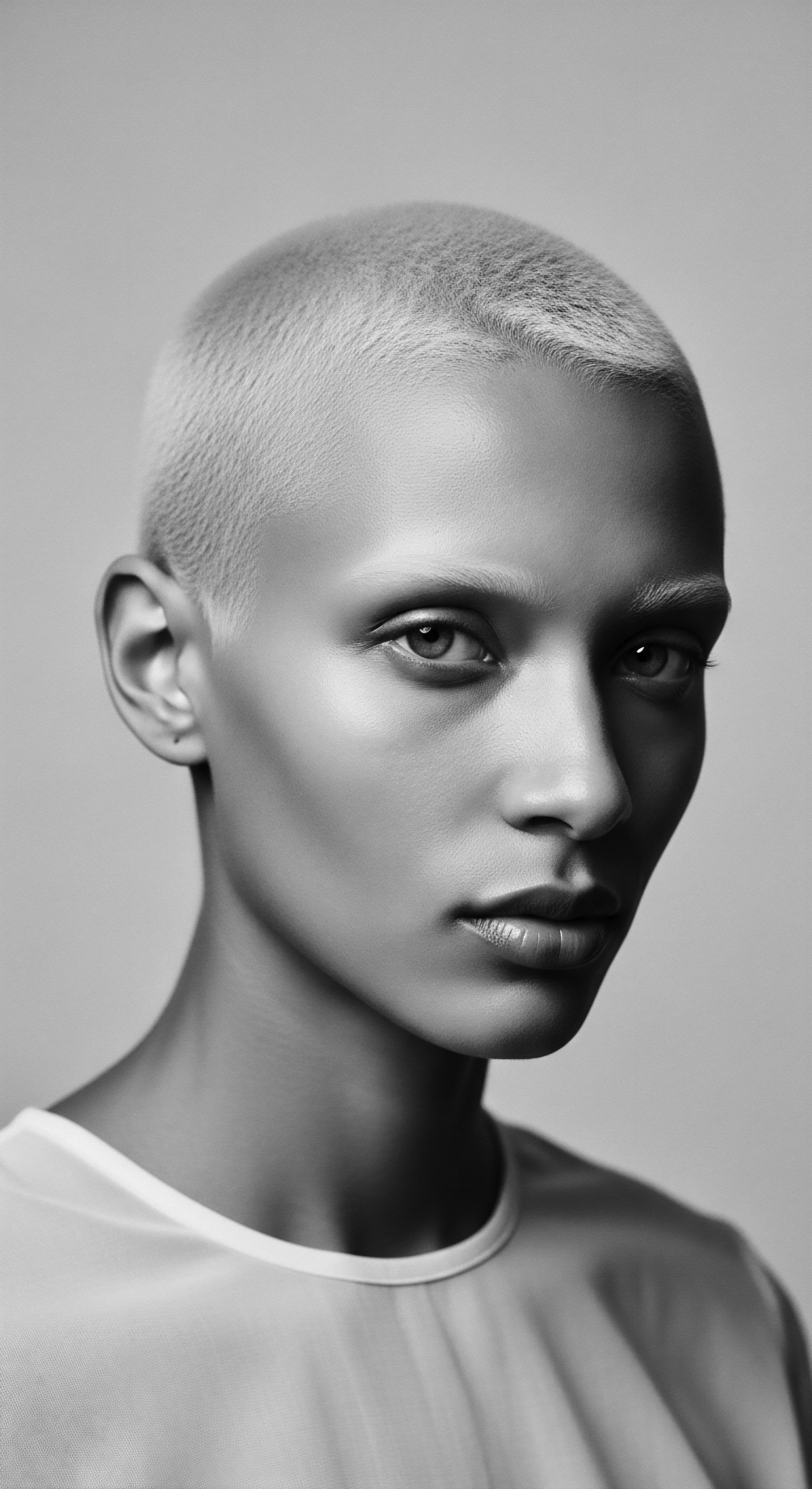
Reflection
Our journey through the intrinsic qualities of textured hair and its deep connection to natural botanical pigments reveals a profound continuity. This is not a simple chronicle of cause and effect, but a living narrative where history, science, and spirit coalesce. The unique cellular architecture of textured hair, with its particular cuticle patterns and abundant eumelanin, is not a challenge for botanical colors; it is the very canvas upon which they express their richest, most authentic shades. This inherent receptivity, observed and understood by those who came before us, formed the bedrock of ancestral hair care traditions.
The wisdom passed down through generations—the knowledge of which leaves, roots, or barks would impart a deepening hue or a protective sheen—stands as a testament to profound observation. It speaks to a time when beauty practices were intertwined with self-reliance, community, and reverence for the earth. The very act of applying these pigments was, and for many still is, a meditative practice, a moment of connection to a heritage that speaks through every strand.
This understanding of “Soul of a Strand” is not theoretical; it is lived experience, felt in the fingertips as one tends to hair, and seen in the luminous, enduring shades imparted by earth’s own palette. The legacy of textured hair and its partnership with botanical pigments continues, inviting us to honor the past as we shape a vibrant future for hair care.

References
- Adejumo, A. O. & Ajani, O. O. (2024). Cosmetic Ethnobotany Used by Tribal Women in Epe Communities of Lagos State, Nigeria. Juniper Publishers, 16(3).
- Bishnoi, V. Singh, K. & Jain, A. (2020). For the love of color ❉ Plant colors and the dermatologist. Indian Journal of Dermatology, Venereology and Leprology, 86(5), 580-584.
- Biocoiff. (2025). Botanical hair color ❉ benefits and application tips.
- Da Costa, D. (n.d.). History of the Natural Texture Hair Movement.
- garmonbozia. (2025, February 13). Real world ancient historical wild colors of hair dye? RPGnet Forums.
- Goldwell. (n.d.). Natural Hair Color.
- Kaur, G. Devi, M. Kumar, P. & Gautam, C. (2024). Herbal Hair Dye ❉ A Comprehensive Review of Botanical Alternatives in Hair Coloring. International Journal of Science and Research Archive, 11(01), 324-335.
- Kilburn & Strode. (2021, October 29). Afro-texture ❉ a hair-story.
- Latimer, V. (2020, October 26). This Is Exactly What a Dye Job Will Do to Your Hair’s Porosity. Essence.
- MDPI. (n.d.). The Genomic Variation in Textured Hair ❉ Implications in Developing a Holistic Hair Care Routine.
- Olarewaju, T. & Lawal, O. A. (2024). Cosmetopoeia of African Plants in Hair Treatment and Care ❉ Topical Nutrition and the Antidiabetic Connection? MDPI, 13(2), 226.
- Patel, S. H. Patel, A. M. Patel, M. S. & Patel, C. V. (2022). Recent Advancements in Natural Plant Colorants Used for Hair Dye Applications ❉ A Review. Cosmetics, 9(6), 118.
- Radico USA. (2025, April 29). Step-by-Step Guide for Dyeing Low Porosity Hair with Organic Hair Color.
- Shahin, C. (n.d.). Four Pure Herbal Colorants for Coloring Hair Naturally. Hachette Book Group.
- The Shade. (n.d.). How Hair Porosity Affects Hair Colour.
- Trademark Salon. (2025, February 7). The Science Behind Hair Coloring ❉ What Happens During the Process?
- Wella. (n.d.). The science of your hair.
